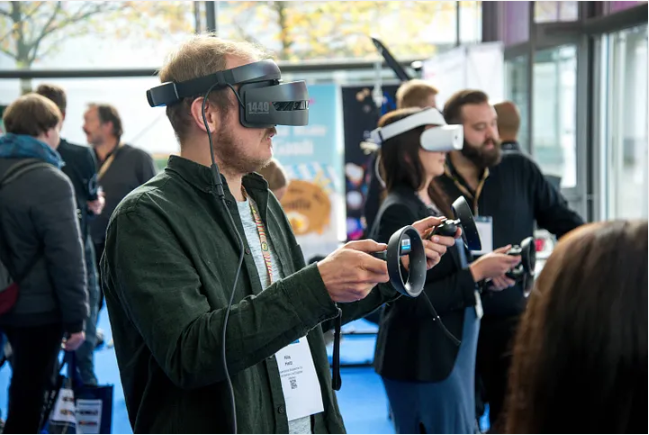Have you ever been in a situation where you find another person’s search results different from yours? But why do the results differ? That’s probably a worthy question if you are particular about SEO and ranking well organically. In fact, you should be aware of the answer to this question if you target the local search.
The primary difference here is the size of the screen! This is because smaller devices have less space, and search results can not be divided into two parts like on a desktop. However, what is so important about it is that knowledge graphs and maps will push the organic results below. This is very beneficial for local businesses, as no matter their Google rankings, users will come across their businesses in a map pack.
And something very important is that mobile SERPs and desktop SERPs shouldn’t be considered similarly! Do you know why?
Well, as per the latest mobile usage statistics from Think With Google, timely and location-based searches significantly skew towards mobile users, while more in-depth research and less urgent searches happen on the computer. Knowing what users see when performing searches is a key part of targeting users, especially in search.
So, let’s understand below what users will see on a search engine results page (SERP) when doing a typical Google search from their mobile or desktop.
Desktop SERP on Google
Understanding the differences between desktop and mobile search results is essential for optimizing SEO strategy. Let’s begin with an overview of the desktop search engine results page (SERP) on Google.
Google Ads
Up to four ads can appear at the top of each search results page. These sponsored listings are prominently displayed to capture user attention.
Google Maps Rankings
Local businesses listed on Google Maps (via Google My Business) are showcased here. Typically, up to three organic listings are displayed, occasionally including a sponsored listing (ad).
Organic Rankings
The first group of traditional organic listings appears beneath the Google Maps section. Ranking in this section should be the primary goal of your SEO campaign.
Related Questions
The “People also ask” section contains questions related to the search query. This feature provides valuable insights for both searchers and content creators by revealing relevant questions and aiding in content optimization.
Additional Organic Listings
A second group of organic listings follows, usually the largest on the page, offering more opportunities for visibility.
Additional Google Ads
Depending on the search query, a second set of ads may appear further down the page.
Related Searches
This section provides Google’s suggestions for related searches based on user data, offering additional search options and insights into user behavior.
Over the years, while the core elements of the desktop SERP have remained the same, design changes have made ads less noticeable (e.g., the yellow ad label was removed), and ads on the right sidebar have been eliminated to align desktop and mobile layouts.
Mobile SERP on Google
Now that you know about Google’s desktop SERP, let’s examine the layout of its mobile SERP.
Google Ads
Sponsored listings (ads) dominate the top of mobile search results, often featuring call-to-action buttons like call buttons, making them highly effective for mobile users.
Results Near [Location]
This section shows the location on which Google bases its search results, allowing users to adjust the area for different location-based results.
Google Maps Results
The Google Maps section, or Local Pack, consists mainly of organic listings influenced by the user’s location. For better ranking, ensure your business is listed in Google My Business and gathers positive reviews.
Top Organic Result
The first organic search result appears immediately after the map listings. This position is highly coveted in mobile SEO due to its visibility and the fact that clicks here are free.
People Also Ask
This FAQ section shows related questions from users, providing valuable information and expanding the search context. It also helps publishers understand related topics around a keyword.
Additional Organic Results
A second group of organic results follows. While these may receive fewer clicks, they still hold value. Enhancements like images or navigation breadcrumbs can improve click-through rates (CTR).
Refine This Search
For local searches, Google often provides a section to refine the search with more specific, long-tail keywords, helping users narrow down their queries.
Continued Organic Results
Even lower on the page, organic results continue to be important. Google’s continuous scroll feature allows users to see more results without having to click to the next page, increasing the chances for visibility.
Related Searches
This section offers suggestions for related searches. For publishers, these keywords can reveal local search trends and provide ideas for reaching customers.
Google Ads
Up to four ads may appear at the bottom of the mobile SERP. While less prominent, these ads can capture the interest of users who scroll down and reconsider clicking.
Comparing the current layout to a few years ago, significant changes include giving priority to ads above the fold and positioning the first organic result beneath the Google Maps section. The Maps results have been streamlined to three organic listings plus a potential promoted listing.
Conclusion
Overall, we hope you know the primary difference between the mobile search results and the de desktop search results.
However, as far as search engine optimization and ranking go, the results are essentially the same; only the layout and placement of the results will vary. You count the mobile rankings as the priority vs. desktop just in case there are some slight discrepancies for your industry-related keywords.
If you are trying to target more mobile users, you should focus on sponsored listings (Google Ads) and local SEO to improve your ranking in the Google Maps portion of the search. These will help you with desktop searches as well; it is just that these two sections, in particular, take up a major part of the smartphone’s “screen real-estate” and tend to generate more clicks when viewed from a smartphone or mobile device.

